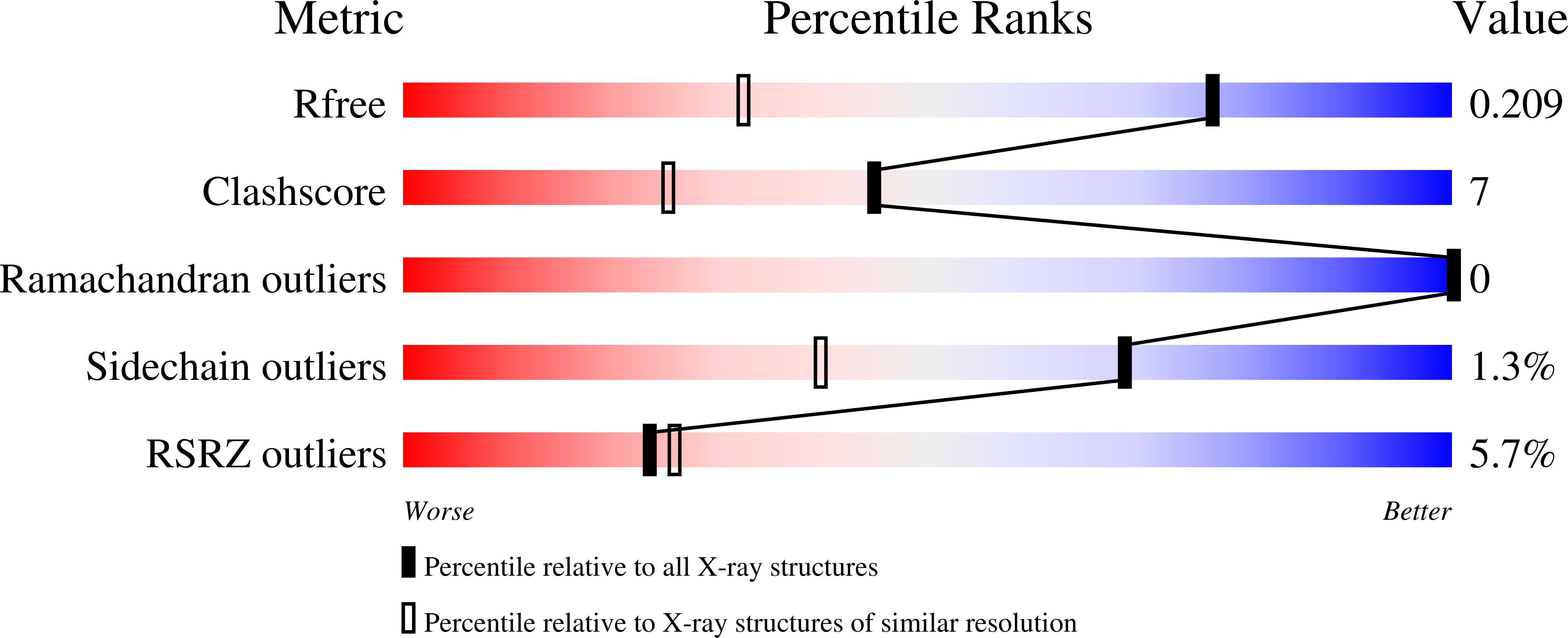Molecular basis for the preferential recognition of beta 1,3-1,4-glucans by the family 11 carbohydrate-binding module from Clostridium thermocellum.
Ribeiro, D.O., Viegas, A., Pires, V.M.R., Medeiros-Silva, J., Bule, P., Chai, W., Marcelo, F., Fontes, C.M.G.A., Cabrita, E.J., Palma, A.S., Carvalho, A.L.(2020) FEBS J 287: 2723-2743
- PubMed: 31794092
- DOI: https://doi.org/10.1111/febs.15162
- Primary Citation of Related Structures:
6R31, 6R3M - PubMed Abstract:
Understanding the specific molecular interactions between proteins and β1,3-1,4-mixed-linked d-glucans is fundamental to harvest the full biological and biotechnological potential of these carbohydrates and of proteins that specifically recognize them. The family 11 carbohydrate-binding module from Clostridium thermocellum (CtCBM11) is known for its binding preference for β1,3-1,4-mixed-linked over β1,4-linked glucans. Despite the growing industrial interest of this protein for the biotransformation of lignocellulosic biomass, the molecular determinants of its ligand specificity are not well defined. In this report, a combined approach of methodologies was used to unravel, at a molecular level, the ligand recognition of CtCBM11. The analysis of the interaction by carbohydrate microarrays and NMR and the crystal structures of CtCBM11 bound to β1,3-1,4-linked glucose oligosaccharides showed that both the chain length and the position of the β1,3-linkage are important for recognition, and identified the tetrasaccharide Glcβ1,4Glcβ1,4Glcβ1,3Glc sequence as a minimum epitope required for binding. The structural data, along with site-directed mutagenesis and ITC studies, demonstrated the specificity of CtCBM11 for the twisted conformation of β1,3-1,4-mixed-linked glucans. This is mediated by a conformation-selection mechanism of the ligand in the binding cleft through CH-π stacking and a hydrogen bonding network, which is dependent not only on ligand chain length, but also on the presence of a β1,3-linkage at the reducing end and at specific positions along the β1,4-linked glucan chain. The understanding of the detailed mechanism by which CtCBM11 can distinguish between linear and mixed-linked β-glucans strengthens its exploitation for the design of new biomolecules with improved capabilities and applications in health and agriculture. DATABASE: Structural data are available in the Protein Data Bank under the accession codes 6R3M and 6R31.
Organizational Affiliation:
UCIBIO, Departamento de Química, Faculdade de Ciências e Tecnologia, Universidade NOVA de Lisboa, Caparica, Portugal.



















